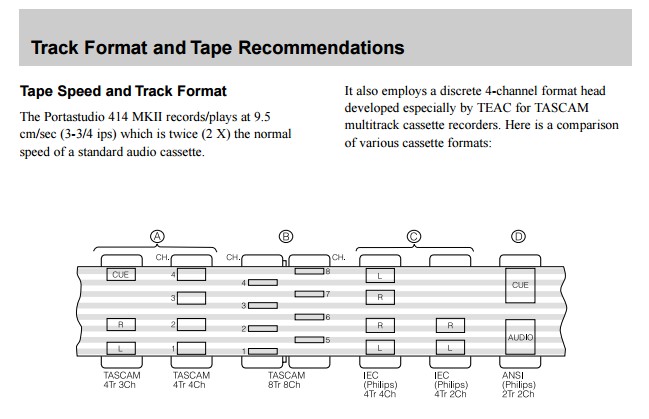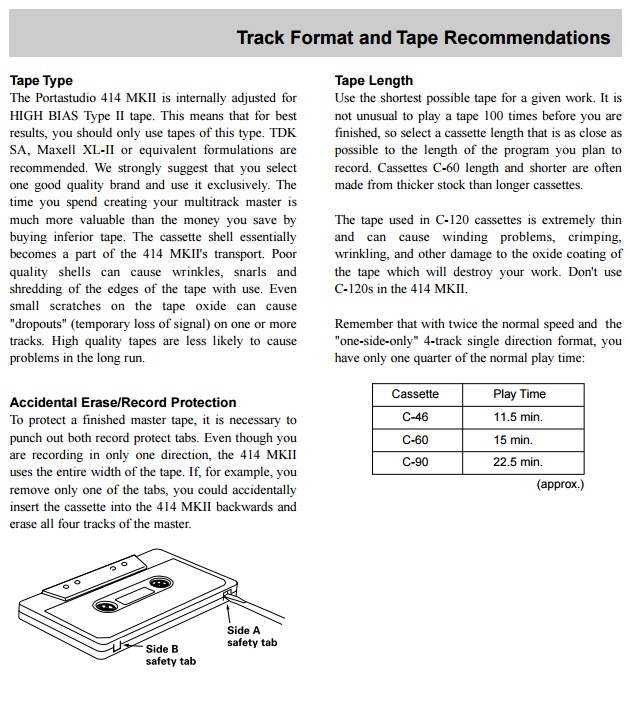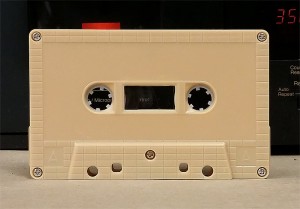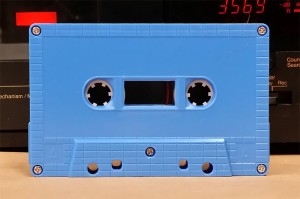Tascam made the popular Portastudio 4 track cassette recorders. Clients often ask us what tapes should be used with these machines. Well first of all, you need the record tabs to be IN so look for tabs in cassettes (C0-TI). Once you have your final mix you would punch out the record tabs to prevent accidental erasure. The 414 and 424 machines need high bias tapes like TDK SA, Maxell XLII, or BASF Chrome Plus. These tapes came in C-60 and C-90 formats. The C-60 tapes are preferred for the thicker base film and slightly better overall performance. Keep in mind these Portastudios run at double speed (3.75 inches per second) and record all 4 tracks in one direction, so a 60 minute tape only gives you 15 minutes of recording time.
The Portastudios used a propietary track format laying down all 4 tracks with even spacing between all tracks. Regular cassette decks have a larger space between the A and B side, and a narrower gap between the left and right channels of each side. Here’s an illustration from Tascam’s manual:

Tascam Portastudio cassette track widths
Tape recommendations

Tape recommendations for Tascam Portastudio 414 and 424


















